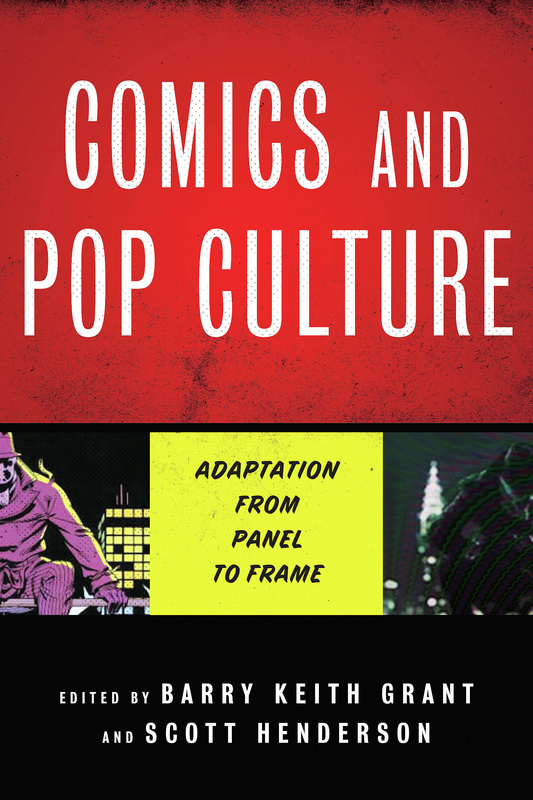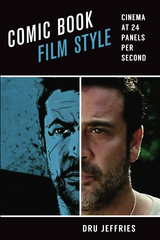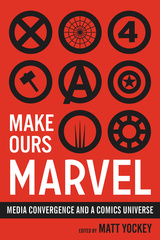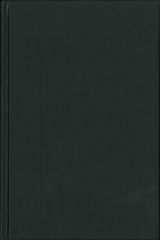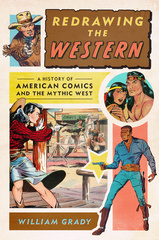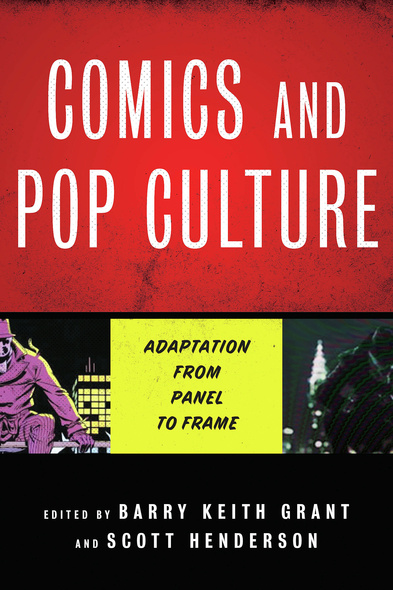
Comics and Pop Culture
Adaptation from Panel to Frame
It is hard to discuss the current film industry without acknowledging the impact of comic book adaptations, especially considering the blockbuster success of recent superhero movies. Yet transmedial adaptations are part of an evolution that can be traced to the turn of the last century, when comic strips such as “Little Nemo in Slumberland” and “Felix the Cat” were animated for the silver screen. Representing diverse academic fields, including technoculture, film studies, theater, feminist studies, popular culture, and queer studies, Comics and Pop Culture presents more than a dozen perspectives on this rich history and the effects of such adaptations.
Examining current debates and the questions raised by comics adaptations, including those around authorship, style, and textual fidelity, the contributors consider the topic from an array of approaches that take into account representations of sexuality, gender, and race as well as concepts of world-building and cultural appropriation in comics from Modesty Blaise to Black Panther. The result is a fascinating re-imagination of the texts that continue to push the boundaries of panel, frame, and popular culture.
This is an indispensable contribution to scholarship on comic books, film, and the synergetic nature of adaptation.
A rich group of essays that represent diverse academic fields, including technoculture, film studies, theater, feminist studies, popular culture, and queer studies.
[Comics and Pop Culture’s] 19 contributors deftly sidestep the ‘Are superhero movies cinema?’ debate – which usually leads to pointless semantic hair-splitting – and instead focus on diverse examples (from American Splendor, to Modesty Blaise and Scott Pilgrim) to illustrate the two mediums’ complex intersections.
Grant and Henderson have collected a fascinating and novel group of essays that challenge conventional notions of adaptation and raise interesting questions for the future of adaptation studies...The variety of subject matter makes this a wonderful read for those interested in comics, film, pop culture, or adaptation theory.
Comics and Pop Culture is an unapologetic celebration of the historical, cultural, and processual affect of comics and film by academics who are fans of the subjects of which they write…it provides a wonderful start to a conversation that other scholars may pick up to investigate in other ways. In that aspect, it proves itself to be a valuable resource for the ongoing scholarship around the things we love to study: comics, film, and pop culture.
Comics and Pop Culture tackles one of the most topical issues in media studies today: the relationship of film, comic books, and other graphic arts. The collection considers this vital nexus from a multitude of angles, looking not only at movies derived from comics but also at graphic adaptations of film and at works conceived simultaneously for the screen and the page. For scholars working in both film and graphic arts, this volume will undoubtedly be an important collection.
The volume is divided into highly meaningful sections so that the relationship between film and comic books is beautifully historicized and contextualized and so that cornerstone texts and debates are raised and illuminated. It considers craft, storytelling, transmedia, and ideological and political concerns and intersections in exciting and challenging ways. It is one of the very first volumes to offer such a comprehensive account of comic books and cinema set within a broad interdisciplinary framework of 'culture.
Barry Keith Grant is an emeritus professor of film studies and popular culture, is the author or editor of many books on film and popular culture, including Film Genre Reader.
Scott Henderson Dean and Head of Trent University Durham GTA, is coeditor of Canadian Television: Text and Context.
- Acknowledgments
- Introduction (Barry Keith Grant and Scott Henderson)
- Part One. Issues and Debates
- The Crossroads of Infinity, or Universum Incognitum (Scott Bukatman)
- From Adaptation to Extension: A History of Comics Adapting Films, 1976–2015 (Blair Davis)
- Take the Movie Home! How the Comic Book Tie-In Anticipated Transmedia Production (Liam Burke)
- Manga, Anime, Adaptation: Economic Strategies, Aesthetic Specificities, Social Issues (Chris Reyns-Chikuma)
- Genre and Superhero Cinema (Aaron Taylor)
- Destroying the Rainbow Bridge: Representations of Heterosexuality in Marvel Superhero Narratives (Miriam Kent)
- Mutatis Mutandis: Constructing Fidelity in the Comic Book Film Adaptation (Jason Rothery and Benjamin Woo)
- “We Roller Coaster Through . . .”: Screenwriting, Narrative Economy, and the Inscription of the Haptic in Tentpole Comic Book Movies (Julian Hoxter)
- Adaptation and Seriality: Comic Book to Television Series Adaptations (Sherryl Vint)
- Part Two. Panels and Frames
- Felix in—and out of—Space (J. P. Telotte)
- A Comic Book Life/Style: World Building in American Splendor (Matt Yockey)
- The Extraordinary Career of Modesty Blaise (James Chapman)
- Authenticity and Judge Dredd on Film (J. Mark Percival)
- CGI as Adaptation Strategy: Can a Digitally Constructed Spider-Man Do Whatever a Hand-Drawn Spider-Man Can? (James C. Taylor)
- Scott Pilgrim’s Precious Little Texts: Adaptation, Form, and Transmedia Co-creation (John Bodner)
- Transmedia Adaptation and Writing in the Margins: A Graphic Expansion of George Romero’s Night of the Living Dead (Aviva Briefel)
- Agency and Intertextuality: Tank Girl, Subcultural Aesthetics, and the Strong Female Protagonist (Scott Henderson)
- Black Panther: Aspiration, Identification, and Appropriation (Jeffrey A. Brown)
- Contributors
- Index

